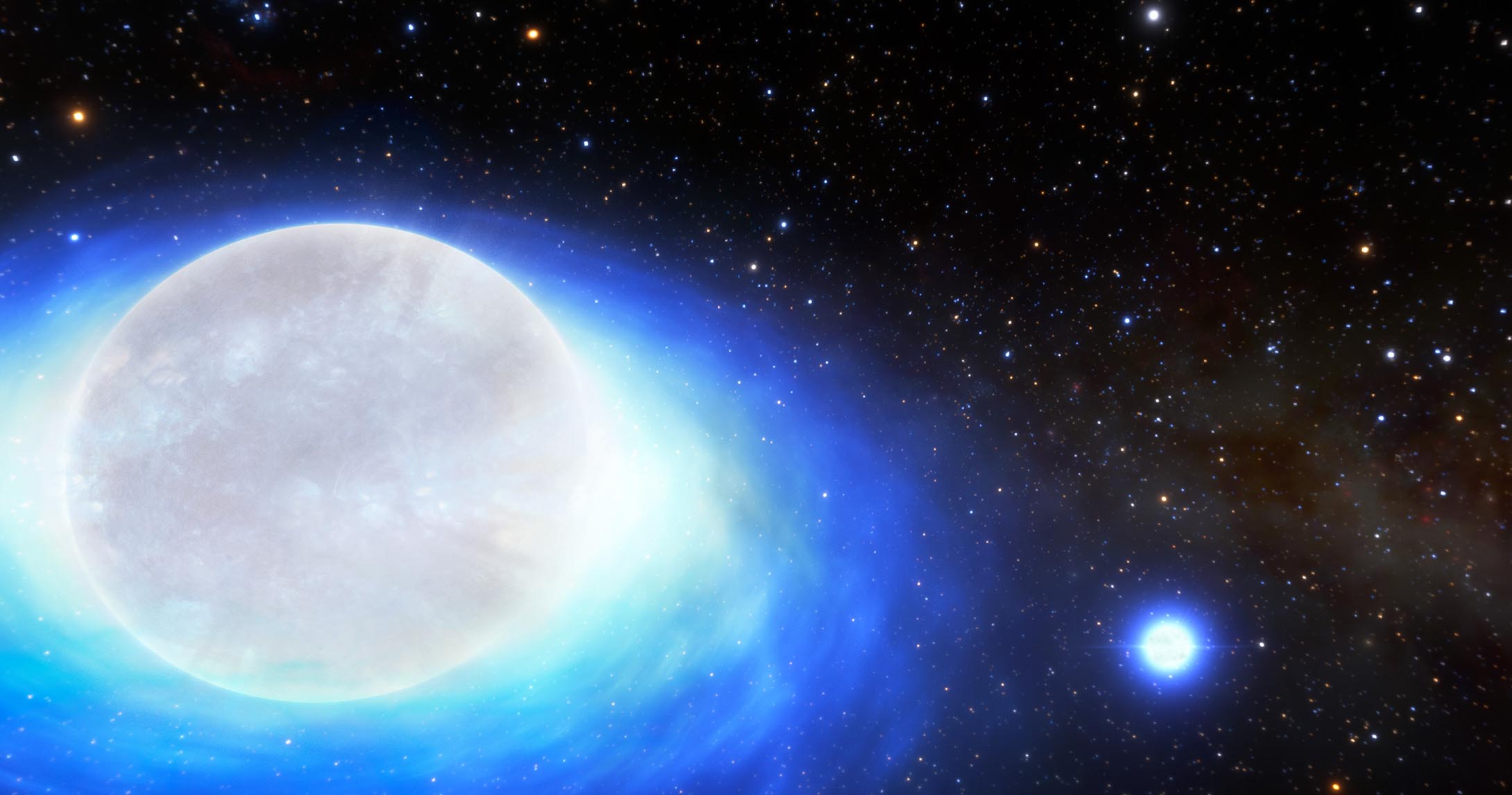NOIRLab: First Kilonova Progenitor System Identified

Astronomers using the SMARTS 1.5-meter Telescope at Cerro Tololo Inter-American Observatory in Chile, a Program of NSF’s NOIRLab, have uncovered the first example of a phenomenally rare type of binary star system, one that has all the right conditions to eventually trigger a kilonova — the ultra-powerful, gold-producing explosion created by colliding neutron stars. Such an arrangement is so vanishingly rare that only about 10 such systems are thought to exist in the entire Milky Way Galaxy. The findings are published in the journal Nature.
This unusual system, known as CPD-29 2176, is located about 11,400 light-years from Earth. It was first identified by NASA’s Neil Gehrels Swift Observatory. Later observations with the SMARTS 1.5-meter Telescope allowed astronomers to deduce the orbital characteristics and types of stars that make up this system — a neutron star created by an ultra-stripped supernova and a closely orbiting massive star that is in the process of becoming an ultra-stripped supernova itself.
An ultra-stripped supernova is the end-of-life explosion of a massive star that has had much of its outer atmosphere stripped away by a companion star. This class of supernova lacks the explosive force of a traditional supernova, which would otherwise “kick” a nearby companion star out of the system.
“The current neutron star would have to form without ejecting its companion from the system. An ultra-stripped supernova is the best explanation for why these companion stars are in such a tight orbit,” said Noel D. Richardson at Embry-Riddle Aeronautical University and lead author of the paper. “To one day create a kilonova, the other star would also need to explode as an ultra-stripped supernova so the two neutron stars could eventually collide and merge.”
As well as representing the discovery of an incredibly rare cosmic oddity, finding and studying kilonova progenitor systems such as this can help astronomers unravel the mystery of how kilonovae form, shedding light on the origin of the heaviest elements in the Universe.
“For quite some time, astronomers speculated about the exact conditions that could eventually lead to a kilonova,” said NOIRLab astronomer and co-author André-Nicolas Chené. “These new results demonstrate that, in at least some cases, two sibling neutron stars can merge when one of them was created without a classical supernova explosion.”
